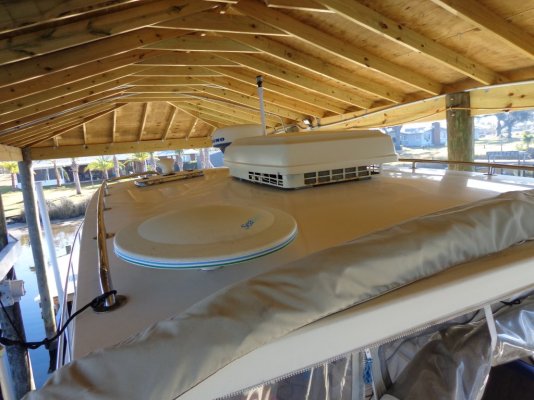Thanks. Great comments.
Sorry for the length of my comments, but your thoughts waked up my brain

.
I might be better off with water cooled marine units. Though I would like to take out all of the wiring bundles and copper tubing - if not already leaking, the tubing will be a problem sooner or later.
The newer self-contained marine units are small and surprisingly quiet, but they require water for cooling the compressor/condenser and drains for the evaporators.
Since my remanufactured Cruisaire unit is only 10 years (and maybe 500 hours old) I hope it can be converted to a more modern freon by replacing the ancient evaporator. If so, I might buy a new compatible evaporator and install it under the settee in my salon, eliminating most of the tubing and cabling and reducing future maintenance cost.
For the forward cabin, I think I can replace the dead compressor in the engine room, that previously cooled the fore/aft cabins, with a small stand-alone unit and install an insulated vent hose through the bottom of a closet directly to the forward cabin.
That leaves me with the master/aft cabin challenge.
I have a currently plugged, screened through hull that no longer provides raw water to the aft head.
1) I could install a new raw water AC pump to this through hull to cool a stand-alone unit in the aft cabin and drain the evaporator into the bilge. Or,
2) I could cut an opening in the aft end of the master cabin (it is currently a solid fiber glass wall that represents the back wall of the doghouse (2' tall x 10' wide). If I were to install one of the new compact "window like units" it would stick out into the 3.5' wide aft walking area about 8 inches. I think I need about 10,000 btu for the master cabin, so I need to learn what is available should I consider this option.
This approach cleans up many future maintenance headaches, frees up storage space previously used by the evaporators, and might only cost about 1/2 as much as recreating the original scheme.
Comments are appreciated.

